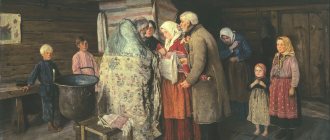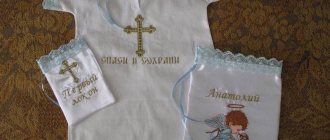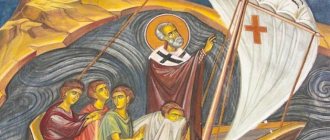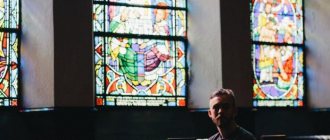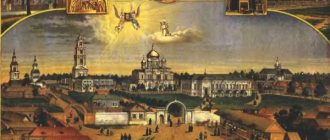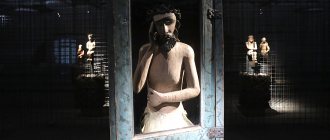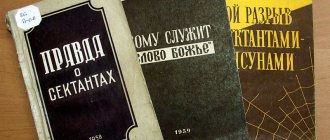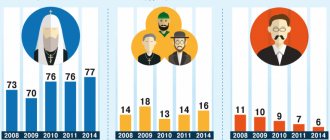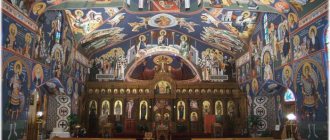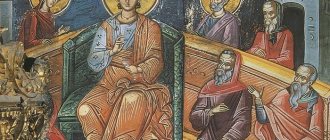STORY
Copts are believed to be direct descendants of the ancient Egyptians. The word “Coptic” itself comes from the Greek “aygyuptos” and simply means “Egyptian”. But today only special groups of the Christian population of North Africa - mainly Egypt and Ethiopia - are called Copts.
In 332 BC, Alexander the Great conquered Egypt and founded Alexandria. Through this port, Greeks and Macedonians began to enter the country in a wide stream. Alexandria at the beginning of our era was one of the centers of the Mediterranean, a place where Egyptian and Greek, Roman and Jewish cultures met.
From this time on, only Greeks could hold official positions. Greek, which the Egyptians did not know, became the official language. The lot of the indigenous people, farmers and artisans remained only hard work, taxes and duties. The Romans conquered Egypt in 30 BC. Restrictions for Egyptians have become even stricter. For the new owners, Egypt was a breadbasket. They sought to export as much grain as possible. The number of taxes and levies, not only monetary, but also for bread, wine, vegetable oil, wood and other natural products, reached 450! Unable to bear this, the Egyptians rebelled in 165, 181-184 AD. The rebels were brutally dealt with.
In the 2nd century AD, Christianity began to spread in Egypt. Alexandria became the center for the spread of the new religion. Thanks to the activities of the first Christian settlements that arose here, the city was among the five first Christian capitals - along with Jerusalem, Antioch, Rome and Constantinople. It is believed that it was the Alexandrian school of theology (Clement, Origen, Cyril) that tried to instill a philosophical language in Christianity. The Coptic Church was founded by St. Mark Evangelist. He arrived in Africa in 47-48 and preached in Alexandria, then the capital of Egypt. In 69 St. Mark was tortured by the Romans. Copts believe St. Mark as his first patriarch. Some of his relics are kept in the Coptic temple in Alexandria.
The spread of Christianity in Egypt was facilitated primarily by its proximity to the Holy Land and the presence of holy places directly related to Holy Scripture: it was on the banks of the Nile that little Jesus hid for almost four years along with the Virgin Mary and her husband Joseph from the persecution of King Herod. And today, the places where the Holy Family stayed are the subject of pilgrimage for Christians from all over the world.
In 213, when suppressing another uprising of the Egyptians, the Romans even destroyed irrigation canals, dooming farmers to hunger and suffering. Emperor Decius in 250 decided to exterminate Christianity, forcing all Christians to perform pagan rituals under a special commission. Those who refused were sent to prison, starved and beheaded, burned at the stake, or thrown to be devoured by wild animals. Women martyrs were executed in a terrible way: they were tied to the tops of two date palms bent to the ground and, suddenly released, were torn in half.
In 258, Emperor Valerian issued a decree to execute all Christian priests, and noble Christians were deprived of their property and turned into slaves for refusing to sacrifice.
The terrible torment remained in the memory of the Egyptian people, and later they began to count time according to the “era of martyrs” - from August 28, 284, the date of Emperor Diocletian’s accession to the throne.
Many Copts were in Roman service and, not without success, spread Christianity throughout the vast empire. With a legion from Egyptian Thebes in 285, Saint Maurice came to Helvetia (Switzerland), and his remains rest in the abbey of the same name in the Swiss canton of Valais. His compatriots Felix, Regula and Exuperius, beheaded by order of a Roman official in the Swiss canton of Glarus, were buried in Zurich. These Coptic missionaries became a symbol of Zurich, and they found a place on the city's coat of arms. Syrian and Coptic monks reached Ireland, and early Celtic churches are strikingly similar in architecture to Coptic temples.
The official date of the appearance of the Coptic Church is 451 - the year of the schism that occurred at the Council of Chalcedon. The Christological teaching of the Monophysites, to some extent due to opposition to Byzantine domination, was rejected by the majority of the Egyptian hierarchy and believers. Attempts to forcefully impose the decisions of the Council only strengthened resistance. Ultimately, a special Monophysite Coptic Church arose (the Arabs and Greeks called the Egyptians “copts”) with its own liturgical and theological tradition.
Most Copts call themselves Orthodox, but around the world they are considered representatives of the “ancient eastern” or “pre-Chalcedonian” churches.
Copts were highly revered in Egypt. Even more than a century after the Arab conquest of the country in 639-641, their position remained relatively prosperous: no one demanded a forced renunciation of Christianity, and the Coptic language was used in official documents.
But already under the Abbasids (750 - 1258), the life of the Copts became more difficult. Although they continue to occupy positions of responsibility, discriminatory laws passed after 850 complicate their situation, but not so much that the Copts disappear completely. By the middle of the 9th century, Copts found themselves a minority in Egypt. Although Islamic rule was accompanied by frequent persecution of Copts, there were also periods of relative freedom, and then the Church again flourished and produced outstanding theological and spiritual works in Arabic.
STUDY OF COPTICS
Although travelers of the 16th and 17th centuries repeatedly wrote about a surprising Christian minority in the midst of a Muslim country, the study of Coptic culture goes back about a century and a half. Suffice it to say that when Auguste Mariette founded the Egyptian Antiquities Service in Cairo in 1858, Roman and Coptic Egypt was not at all in his sphere of interest. But his employees, Albert Gayet and Jean Kleda, spent many years in tireless searches and excavations. The results of their labors are divided between the Paris and Cairo collections. It’s nice that another name that has gone down in the history of archeology is associated with Russia: Vladimir von Bock contributed a lot to the current Coptic riches of the Hermitage and the Pushkin State Museum of Fine Arts.
LANGUAGE
The Coptic language is the last stage of development of the language of the ancient Egyptians and was used by François Champollion in deciphering ancient Egyptian hieroglyphs. Coptic letters are similar to Greek, and many words are borrowed from the Greek language.
After the terrible persecution of Christians under Diocletian, by whose decree Christians, thousands of men and women with children, were put to painful death after torture, in 313 Emperor Constantine the Great declared himself a Christian and issued a decree on confession of religion.
By this time, Christianity in Egypt had already become widespread. The question arose about translating the Bible into the language of the Egyptians, who did not know Greek. And the common people of Egypt did not know Egyptian demotic (hieroglyphic) writing, since it required special and lengthy training. The translators had to create an alphabet of 24 Greek letters and 6 new signs for sounds that were not in the Greek language. And from the beginning of the 4th century, Christian Egyptians, or “Coptics,” as they were later called, familiar with the alphabet, could read the Holy Scriptures.
In 641, Egypt was conquered by the Arabs and the Coptic language was dropped from official use.
In 1517, power in Egypt passed into the hands of the Turks, persecution and oppression led to the fact that in the 17th century the Coptic language ceased to be spoken...
Coptic literature has reached us, in which stories about religious martyrs (martyriyas) and biographies of the first figures of the Coptic church occupy a large place. This literature is an important source for the study of the early history of Christianity.
Coptic scholars, fearing for the fate of the Coptic language, published grammar textbooks, but this did not help. Worship in the Coptic church is conducted in the Coptic language, but those praying no longer understand what they hear. Sometimes they use the Bible, in which the text is given in parallel in two languages. And the priests first read the text in Coptic, and then in Arabic.
CHURCH – STRUCTURE AND RITUAL
Faith
Copts are Monophysites, that is, they believe that Christ had a single, divine essence, denying the fullness of the human nature of the Savior. The Coptic Church belongs to the Eastern, Orthodox branch of Christianity, and in this sense the Copts are very close to traditional Orthodoxy. But there are many differences between Orthodoxy and Egyptian Christianity - both in theology and in traditions.
Temples
The ancient ecclesiastical center is Alexandria. There are the graves of all the primates of the Church, starting from St. Brand. The current center of the Coptic Church and the entire people in general is located in Cairo, not far from the Demerdesh metro station. Giant Cathedral of St. Mark, ancient temple of St. Peter and Paul, many services and buildings.
Coptic churches were simply removed. For example, in the Patriarchal Cathedral of St. The Mark in Cairo, founded in 1969, on the 1900th anniversary of the death of the founder of the Coptic Church, has whitewashed walls without frescoes. The main part of the iconostasis is simply carved wooden panels inlaid with mother-of-pearl, and only the top row contains the actual icons. Sometimes icons are hung on the walls of temples, as in the famous Hanging Church in Old Cairo. Frescoes are rare. The iconography is special. People's figures are depicted flat, proportions are not respected, details are not recorded, as in children's drawings.
Perhaps the most significant internal difference is that most temples have benches. Crosses also have an unconventional shape for us - they are oriented in two directions, so that no matter which side you look at, the Cross is visible.
When entering the temple, Copts take off their shoes. In the Coptic Church, men and women are separated by a partition. They pray seven times a day, facing east, always wearing hats. They fast most of the year. There are seven great and five small holidays in the year, and five fasts.
But in general, Coptic churches are similar to all Orthodox churches, especially inside - an altar oriented to the east, soleya, iconostasis, paintings, candles, utensils.
Monasticism
The Egyptians gave the Christian world monasticism - a tradition that has become an integral part of Russian Orthodox culture.
The first monastery was founded in the Egyptian Eastern Desert by St. Anthony the Great at the beginning of the 4th century and still exists today. Almost simultaneously with it, the monastery of St. Pavel. On the banks of the Nile such saints, revered by Russians as St. Macarius of Egypt, St. Catherine, Mary of Egypt.
Currently, there is a clear revival of monasticism, and many young monks engaged in agriculture and publishing are repopulating ancient monasteries. The Church has twelve monasteries with 600 monks and six nunneries with 300 nuns. Most of the monasteries are concentrated in Wadi al-Natrun, 60 miles northwest of Cairo. The regime in the monasteries is very strict: the monks eat mainly bread and water and pray a lot.
Dad
The Coptic Patriarch of Alexandria bore (and bears) the title of pope from much earlier times than the bishop of Rome. Since 536, the Copts have elected their patriarch, who, together with the synod, is located in Cairo.
The pope-patriarch is elected for life at a local council from the most famous monastery confessors who have lived for many years in the desert. After this, he becomes the leader of the nation and enjoys unquestioned authority.
The current Pope Shenouda III (born 1923, elected 1971) is the head of the Coptic Church and the only spiritual leader of the entire people. His title: POPE OF Alexandria, Patriarch of the See of St. Brand.
Dad is accessible, especially to people who come from afar. Every week he, accompanied by the episcopate, holds meetings with the people in St. Mark's Cathedral. The huge temple is filled with people, the pope sits down at the table on the salt, pronounces a spiritual word for about 40 minutes and then, without preparation, for about an hour answers notes that have been dropped in advance into a special vessel standing in the temple.
Service
Liturgical language, just like ours, differs from colloquial language. Here they serve in Coptic from the time of Hellenism - the spread of Greek influence to the Mediterranean countries and beyond.
The rite of their liturgy is more ancient than ours; the laity receive communion like the clergy, taking the Holy Gifts (Body of Christ) in their hands and drinking from the Holy Chalice (from the hands of the priest). Shoes are removed before communion. Confession is required. Coptic priests wear crosses, usually made of leather, and turban caps; they are also approached for blessings.
Cemetery
The Coptic cemetery is very different from ours. Crypt graves are small, sometimes elegantly decorated chapel houses without a roof (it is not needed, since it rains 3-4 times a year). People come here for the whole day to be with their deceased relatives. Here they pray and cook food. You can even live here. Graves in Islamic cemeteries are approximately the same, only with different symbolism. During the wars they were populated by refugees.
Spiritual training
There are many Coptic Sunday schools in Egypt. The main theological seminary of the Coptic Church is located in Cairo near St. Mark's Cathedral. Almost half of the priests graduated from this seminary. Many lay people study Scripture and theology in evening courses here. Founded in 1954, the Coptic Institute of Higher Studies is located in the patriarchate and is an important ecumenical center for the study of the Coptic Christian tradition.
The problem of the church is Muslim fundamentalism
The rise of Muslim fundamentalism in Egypt is creating new problems for the Coptic Church. Following anti-Coptic fundamentalist protests in the late 1970s, President Sadat placed Pope Shenouda III under house arrest in a monastery in 1981 and did not release him until 1985. It is believed that the government took this measure to demonstrate its impartiality towards the conflicting parties. However, this kind of interference in the affairs of the Coptic Church worried many Christians in Egypt.
In 1997, attacks by Islamic armed groups against Copts increased.
Church expansion
Meanwhile, in recent years there has been a revival of Coptic church life in the world and the growth of its influence. On July 19, 1994, the Coptic Orthodox Patriarchate accepted the small Orthodox Church of the British Isles under its jurisdiction as a separate diocese covering Great Britain and Ireland. This Church was renamed the British Orthodox Church, and its primate, Metropolitan Seraphim of Glastonbury, received the new name Abba Seraphim El Suriani.
Coptic Church and Russian Orthodox Church
The Coptic Church is the direct predecessor of the Russian Orthodox Church. In the 5th century, after Egypt became part of the Byzantine Empire, a schism occurred in the Alexandrian Church. The Byzantines formed their own church, and a second, Greek, patriarchate arose in Alexandria. Well, from Byzantium in the 10th century, Christianity came to the Russian lands.
Since 1824, many monks of various orders and American elders visited Egypt with Bibles in Arabic, thus wanting to contribute to the revival of the Coptic Church. The Coptic Church gravitated towards Orthodoxy, began to seek reconciliation with the Orthodox Church and even called itself Orthodox. However, the unification of both churches has not yet occurred.
There is now an active dialogue between the Coptic Patriarchate and the Moscow Patriarchate.
Signs and Wonders
Egypt lives an active spiritual life. Many signs and wonders are still happening today.
Thus, in the suburbs of the Egyptian capital Cairo, since April 1968, a strange phenomenon could be observed above the roofs of two Coptic churches, which puzzled both believers and skeptics a lot. The radiant vision of the Virgin Mary, constantly appearing in the early morning hours, appeared for the first time over the Coptic Church of St. Mary in Zeitoun. For three years, thousands of people sought to see this phenomenon. Numerous healings of the sick, including Muslims, have been recorded. Last appearing in 1971, the vision materialized again in 1986 over the Church of St. Demian, a Coptic temple outside Cairo city limits.
Eyewitnesses said that it was often accompanied by smoking incense smoke and the dome of the church seemed to flash with light when the vision was above it. There were so many people gathering in front of the church that the police had to take action to prevent riots.
Musad Sadiq, a journalist who covered the story for a Cairo newspaper, reported that the vision once lasted as long as 20 minutes. Although scientists have tried to present this phenomenon as a visual illusion, mass hallucinations, a natural optical phenomenon, or even simply as electrical discharges on the dome of a temple, no one has been able to give a clear explanation of the phenomenon.
COPTS - CELEBRITIES
St. Athanasius, the author of the festive Orthodox church liturgy St. Basil and the founder of the monastic and hermit movement St. Pahom, were Copts, as was the former UN Secretary General Boutros (Peter) Boutros-Ghali.
All of them are descendants of pharaohs.
CULTURE AND ART
Coptic culture is an amazing fusion of Egyptian, Greek and Christian myths. One of the largest researchers of Coptic antiquities, Alexander Kakovkin, claims that the Copts perceived pagan deities and heroes as Christian characters: “Thus, Justin the Philosopher, or Martyr (d. about 165), saw distorted biblical prophecies in the myths about Dionysus, Hercules, Asclepius about the Savior. Justin especially found a lot in common between Christ and Joseph.” Perhaps the most interesting thing in Coptic art is textiles. They wove mainly using the tapestry technique. Favorite motifs include the labors of Hercules and the story of Joseph.
In general, Coptic ancient monuments in Egypt are carefully protected, restored, and state plaques hang on all of them. Treasures of Coptic culture are kept in the Cairo Copt Museum. And tourists are certainly taken to the ruins of an ancient Christian monastery of the 5th century. near Saqqara - the city of the dead near the ancient capital of Egypt, Memphis.
COMMUNITY
Copts now make up about 8-9% of Egypt's population. There is not a single Copt in the country's leadership.
Copts are the largest Christian community in the Middle East and a visible and active minority in Egypt. According to official data, in Egypt their number is 3,900 thousand people. According to the data of the Coptic Church itself (as of 1995), about 8 million believers belong to it.
Copts live primarily in cities and regions. There are several Coptic areas in Cairo. They can be distinguished by the abundance of temples (and there are about 1000 of them in Egypt), portraits of Pope Shenouda or the previous Pope Cyril in shops and pharmacies. Driving around Cairo you can often see bell towers and crosses above the domes. There are also several cities, mostly inhabited by Copts.
There is also a significant Coptic diaspora, whose representatives live in Europe, Africa, Australia and America
The material was prepared using materials from the website www. africana. ru
Like
Notes
- Khairi Abaza and Mark Nakhla.
[www.washingtoninstitute.org/templateC05.php?CID=2386 The Copts and Their Political Implications in Egypt]. The Washington Institute (25 October 2005). - [www.chaskor.ru/p.php?id=2431 How to look seven years younger]. Private Correspondent
. chaskor.ru (January 7, 2009). [www.webcitation.org/61AA0MbB6 Archived from the original on August 24, 2011]. - Mawaiz wa al-'i'tibar bi dhikr al-khitat wa al-'athar (2 vols., Bulaq, 1854), by Al-Maqrizi
- Chronicles, by John of Nikiû
- Kamil, page 41
- Branitsky A. G., Kornilov A. A.
[www.fmo.unn.ru/files/2013/01/Religii-regiona.pdf Religions of the region]. - N. Novgorod: Nizhny Novgorod State University named after N. I. Lobachevsky, 2013. - 305 p.
